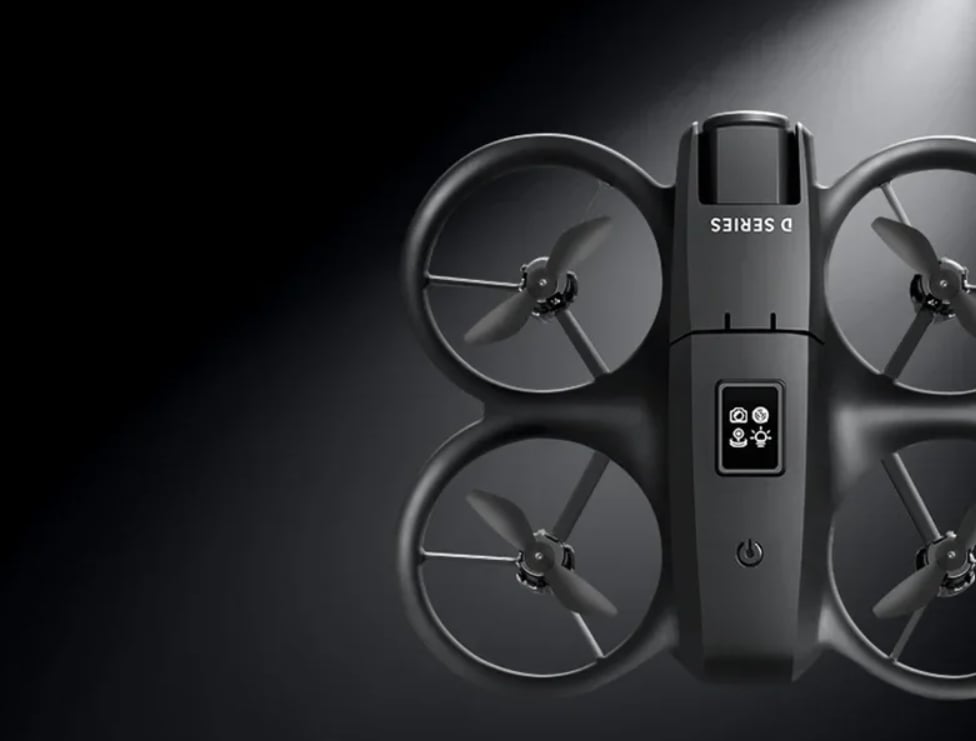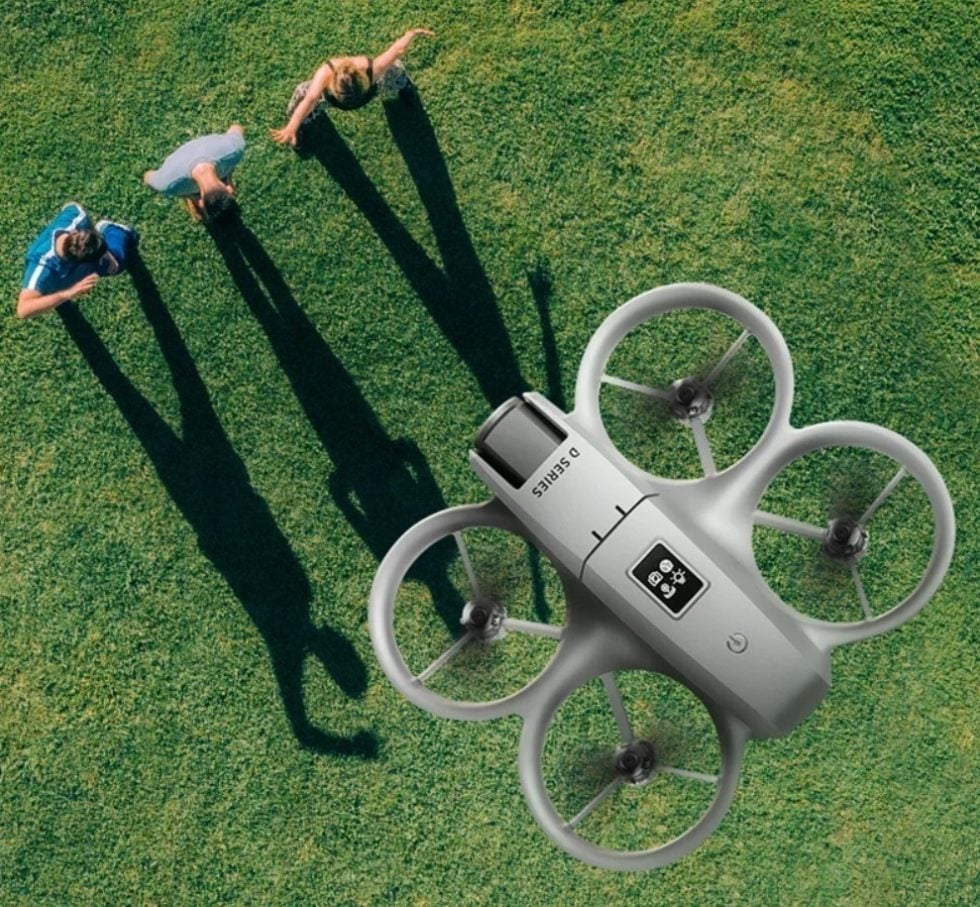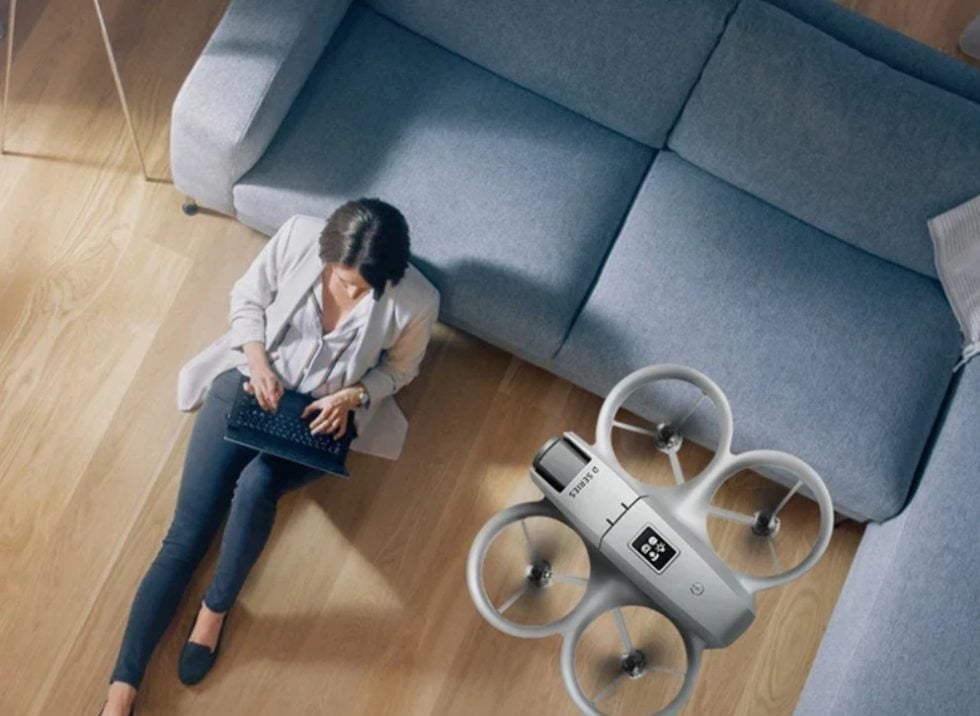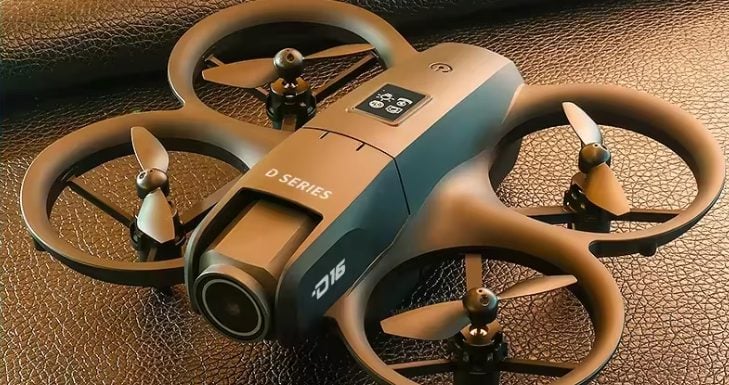The drone market is a battlefield, constantly evolving with new contenders promising the sky (pun intended) and delivering… well, sometimes a little less. Xiaomi, a brand synonymous with affordable tech that often punches above its weight, has thrown its hat into the mini-drone ring with the D16. Boasting an “8K HD Dual Camera,” “180° Electric Adjustable GPS Positioning,” and “Obstacle Avoidance,” it sounds like a powerhouse in a pint-sized package. But does this little bird truly sing, or is it just a chirp in a crowded choir? Let’s take a comprehensive, entertaining, and brutally honest look at the Xiaomi D16 Mini Drone.
First Impressions: The “Aww” Factor and the Specs Sheet Glimmer

Unboxing the D16, you’re immediately struck by its diminutive size. This isn’t a DJI Mavic; it’s more like a particularly chunky hummingbird. The “fully enclosed, propeller safe design” is a smart move, especially for beginners or those who envision flying it indoors (though more on that later). It feels reasonably robust for its plastic construction, and the black/grey color scheme is sleek enough. The packaging itself is compact, suggesting portability, which is a major draw for any mini-drone.
Diving into the spec sheet, a few things immediately jump out:
- 8K HD Dual Camera: This is undoubtedly the headline feature. 8K on a mini-drone? That’s a bold claim, and one we’ll scrutinize heavily.
- 180° Electric Adjustable Camera: This offers a degree of flexibility rarely seen in this price range, promising unique shooting angles.
- GPS Positioning (implied by “GPS Positioning Obstacle Avoidance”): This is crucial for stable outdoor flight and return-to-home functionality.
- Obstacle Avoidance (Three-sided sensing): A feature typically reserved for more premium drones, this is a significant selling point for peace of mind.
- Brushless UAV (Bushless UAV – likely a typo for Brushless): If true, brushless motors offer greater efficiency and longevity than brushed motors.
- 20-minute flight time: Decent for a mini-drone, though real-world performance often varies.
On paper, the D16 presents a compelling argument for itself. It looks like Xiaomi is aiming to disrupt the budget drone segment with features that usually demand a higher price tag. But as seasoned drone enthusiasts know, specifications can sometimes be more aspirational than actual.
Taking Flight: A Mixed Bag of Promises and Realities

The true test of any drone is in the air. Getting the D16 ready is straightforward: insert the battery, power up the remote (don’t forget those AAA batteries!), and connect via the WiFi FPV app.
The Good: Stability (Mostly) and Ease of Use
For a drone of its size and price point, the D16 does a commendable job with stability, particularly in its fixed-altitude maintenance mode. This is largely due to the “Six axis gyroscope” and, if it truly functions as advertised, the “optical flow fixed-point positioning.” For first-time pilots, this stability is a blessing, reducing the learning curve and preventing immediate crashes. The “headless mode” is also a welcome feature for beginners, simplifying orientation.
“One-click return” is another staple for entry-level drones, and it generally works as expected, bringing the D16 back towards its takeoff point. The 2.4GHz anti-interference technology seems to hold up, providing a relatively consistent connection within a reasonable range. The “fully enclosed, propeller safe design” truly shines here, making accidental nicks and bumps less catastrophic for both the drone and its surroundings. You can certainly feel more confident letting a newbie take the sticks with this design.
The “Hmm” Factor: Where the D16 Stumbles
Now, let’s talk about those headline features and where they might fall short.
1. The 8K Camera: A Tale of Ambition and Disappointment
This is perhaps the biggest point of contention. While the D16 is advertised with an “8K HD Dual Camera,” it’s crucial to manage expectations. True 8K resolution in a drone requires a significant sensor, powerful processor, and substantial bitrate – all components that are expensive and demanding on a mini-drone’s power supply.
In reality, the D16’s camera quality is… well, it’s a mini-drone camera. Expect something closer to 720p or 1080p upscaled footage, rather than genuine 8K. The images and videos it captures are suitable for casual sharing on social media, but don’t expect cinematic masterpieces or crisp, professional-grade aerial photography. Colors can be washed out, dynamic range is limited, and low-light performance is poor. The “dual camera” is a nice touch, offering different perspectives, but both cameras suffer from the same fidelity limitations.
The “electrically adjustable 180°” camera angle is genuinely innovative for this class of drone, allowing for some interesting upward-looking shots or quick adjustments on the fly. However, the quality of the output somewhat negates the creative freedom this feature provides. It’s a fantastic idea, poorly executed due to hardware limitations.
2. GPS Positioning and Obstacle Avoidance: More Hype than Harmony
The mention of “GPS Positioning” and “Obstacle avoidance Bushless UAV” immediately conjures images of a sophisticated, self-flying drone. However, the D16’s implementation is likely far more basic than what these terms imply on higher-end models.
While it does offer some form of optical flow positioning for stable hovers (especially indoors or in low wind), actual robust GPS for precise outdoor positioning and reliable return-to-home is questionable at this price point. The “three-sided sensing obstacle avoidance” is likely infrared-based and limited in its range and effectiveness. It might prevent you from bumping into a large, slow-moving object, but don’t expect it to navigate a dense forest or avoid power lines with any real intelligence. It’s more of a “bump alert” system than a true avoidance system. The drone is certainly not a “brushless UAV” as the motor is clearly stated as a 716 coreless motor which is a brushed motor, a major factual error in the description.
3. Flight Performance: Good for Casual Fun, Not for Speed Demons
The listed flight speeds (3m/s, 4m/s, 6m/s) are respectable for a mini-drone, allowing for some zippy maneuvers. However, this is a lightweight drone, and even a moderate breeze will significantly impact its stability and speed. It’s best flown in calm conditions. The “360° Stunt Roll” is a fun party trick, but ultimately a novelty.
The “Draw the flight path on the screen” feature is a nice addition, allowing for automated flight paths, but again, the precision will be limited by the underlying positioning system.
Who is the Xiaomi D16 Mini Drone For?

After all the critique, it’s important to frame the D16’s place in the market. This is emphatically not a professional photography tool, nor is it a high-performance racing drone.
The Xiaomi D16 Mini Drone is best suited for:
- Absolute Beginners: Its enclosed propellers, headless mode, and relatively stable flight characteristics make it an excellent entry point into the world of drones. It’s forgiving and less intimidating than open-propeller models.
- Children and Young Adults: The toy-like nature, stunt features, and safe design make it a fun gadget for younger aspiring pilots.
- Casual Enthusiasts on a Tight Budget: If you simply want to experience the joy of flying a drone and capture some basic aerial footage without breaking the bank, the D16 could fit the bill.
- Indoor Fliers (with caveats): Its small size and enclosed propellers make it somewhat suitable for indoor flight, though spatial awareness is still key.
The Verdict: A Fun Toy with Overly Ambitious Marketing
The Xiaomi D16 Mini Drone is a classic example of a product whose marketing promises significantly more than its actual performance delivers, especially regarding the camera and advanced features like GPS and robust obstacle avoidance. The “8K HD” claim is particularly misleading and something potential buyers should be very wary of.
However, if you can temper your expectations and view it as an advanced toy drone rather than a professional instrument, there’s still fun to be had. The enclosed design is genuinely good for safety, the flight time is decent, and for a beginner, it provides a very accessible entry point into drone piloting.
Pros:
- Safe, fully enclosed propeller design: Excellent for beginners and indoor use.
- Compact and portable: Easy to carry anywhere.
- Stable flight for its class: Good for learning to fly.
- Headless mode and one-key return: Beginner-friendly features.
- Electrically adjustable camera angle: Unique for this price point.
- Affordable: Good value as a starter/toy drone.
Cons:
- Misleading “8K HD” camera claim: Real-world camera quality is much lower.
- “GPS Positioning” and “Obstacle Avoidance” are basic at best: Don’t expect advanced functionality.
- “Brushless UAV” is incorrect, it has brushed motors: A factual error in the description.
- Limited performance in windy conditions.
- Plastic build, while safe, might not withstand significant crashes.
Ultimately, the Xiaomi D16 Mini Drone is a decent little package if you’re looking for an inexpensive, safe, and easy-to-fly drone for recreational purposes. Just remember to leave your cinematic aspirations at the door and embrace it for what it truly is: a fun, feature-packed toy that will get you airborne without emptying your wallet.
So, would I recommend it? Yes, but with a very clear asterisk: understand its limitations and don’t fall for the 8K hype. As a stepping stone into the drone world, it offers a good, albeit flawed, experience. Happy flying (and remember, keep those expectations grounded)!
Latest AliExpress Coupons
Ready to shop on AliExpress? Don’t pay full when you can get it for less with coupons. Use AliExpress coupons below to save big on your order. Also don’t forget you can keep track of AliExpress sales with our AliExpress sales calendar, so you don’t miss out on any opportunity to save big with your AliExpress orders again.
90% OFF




Leave a Reply